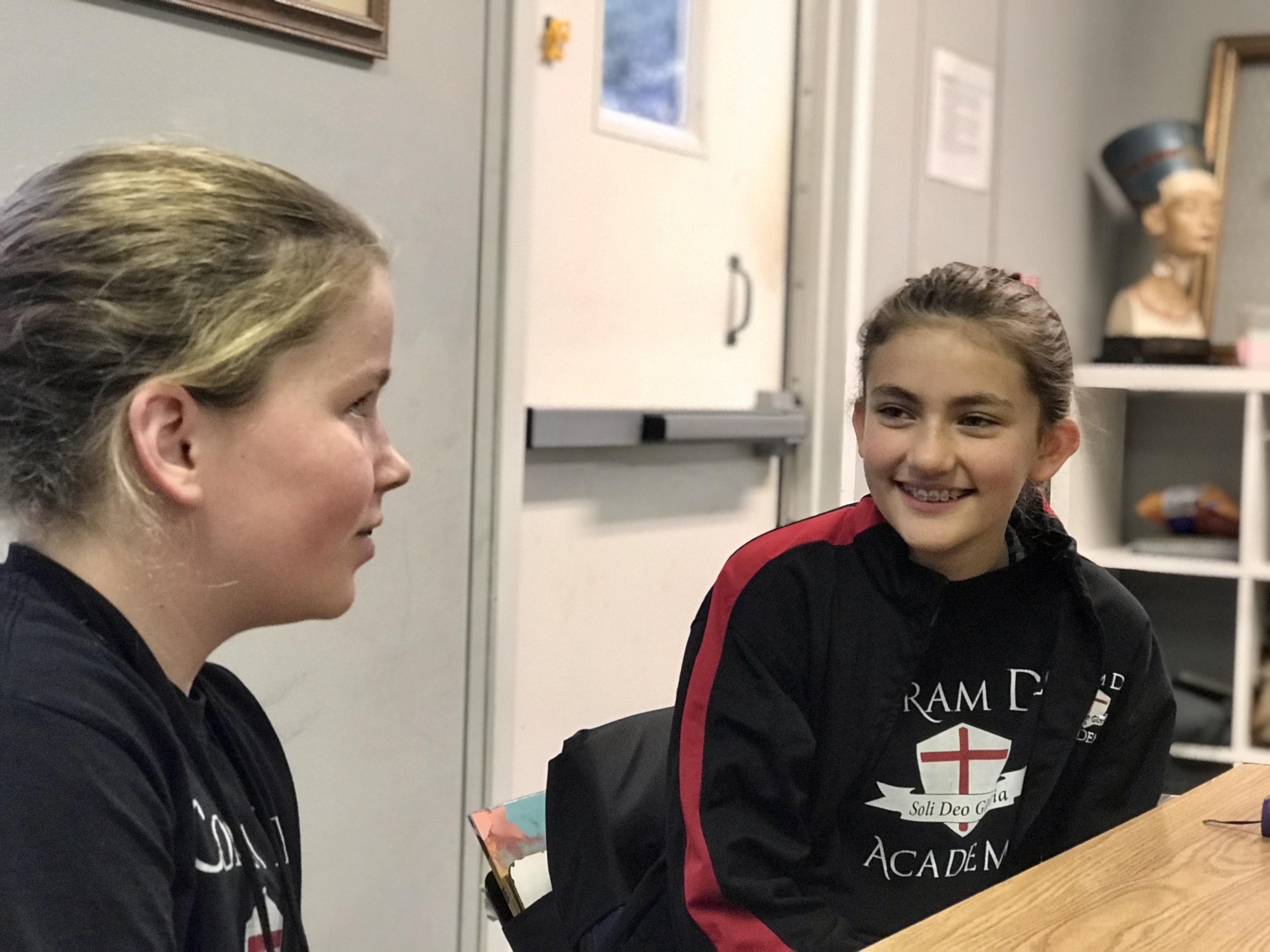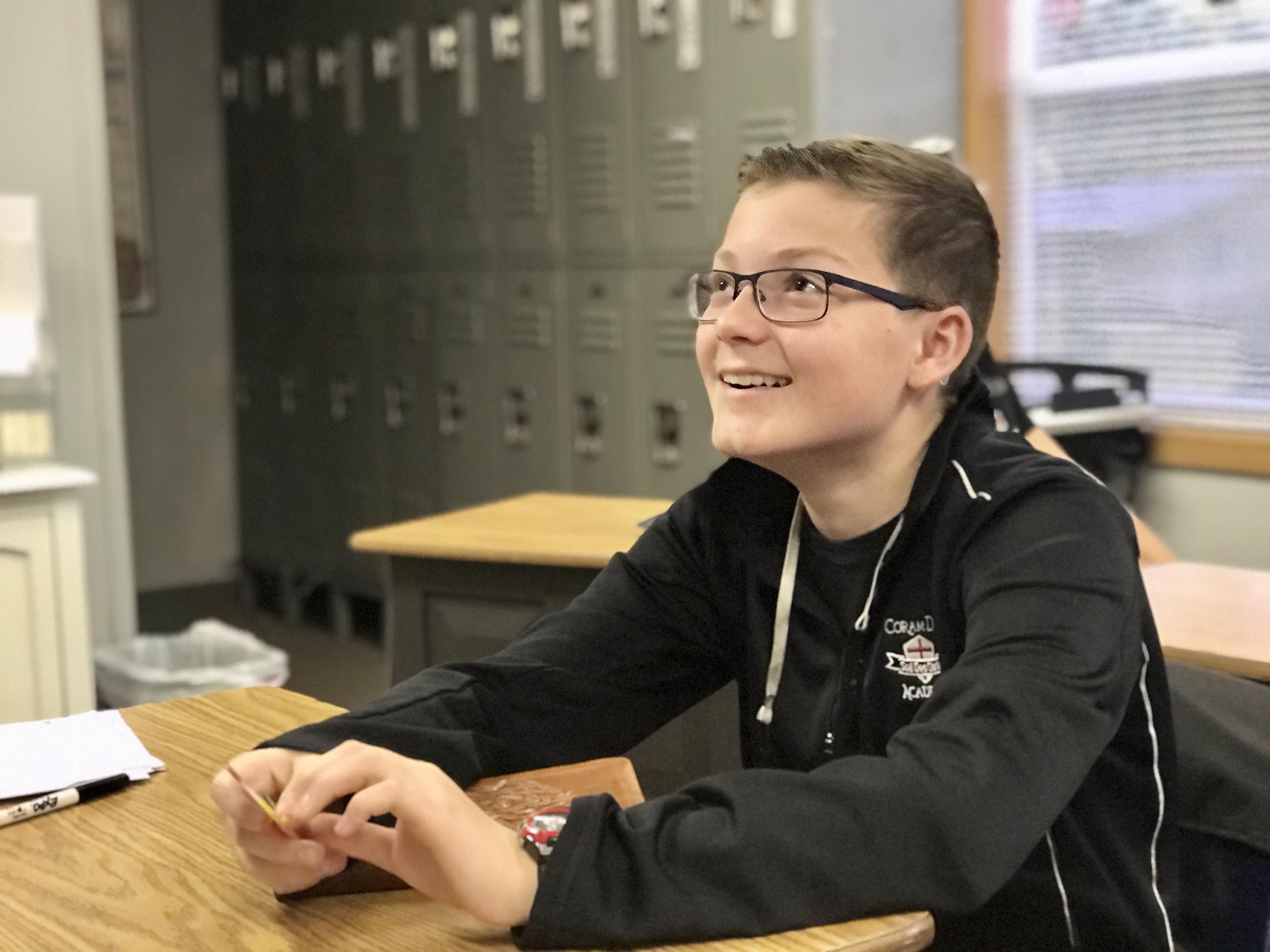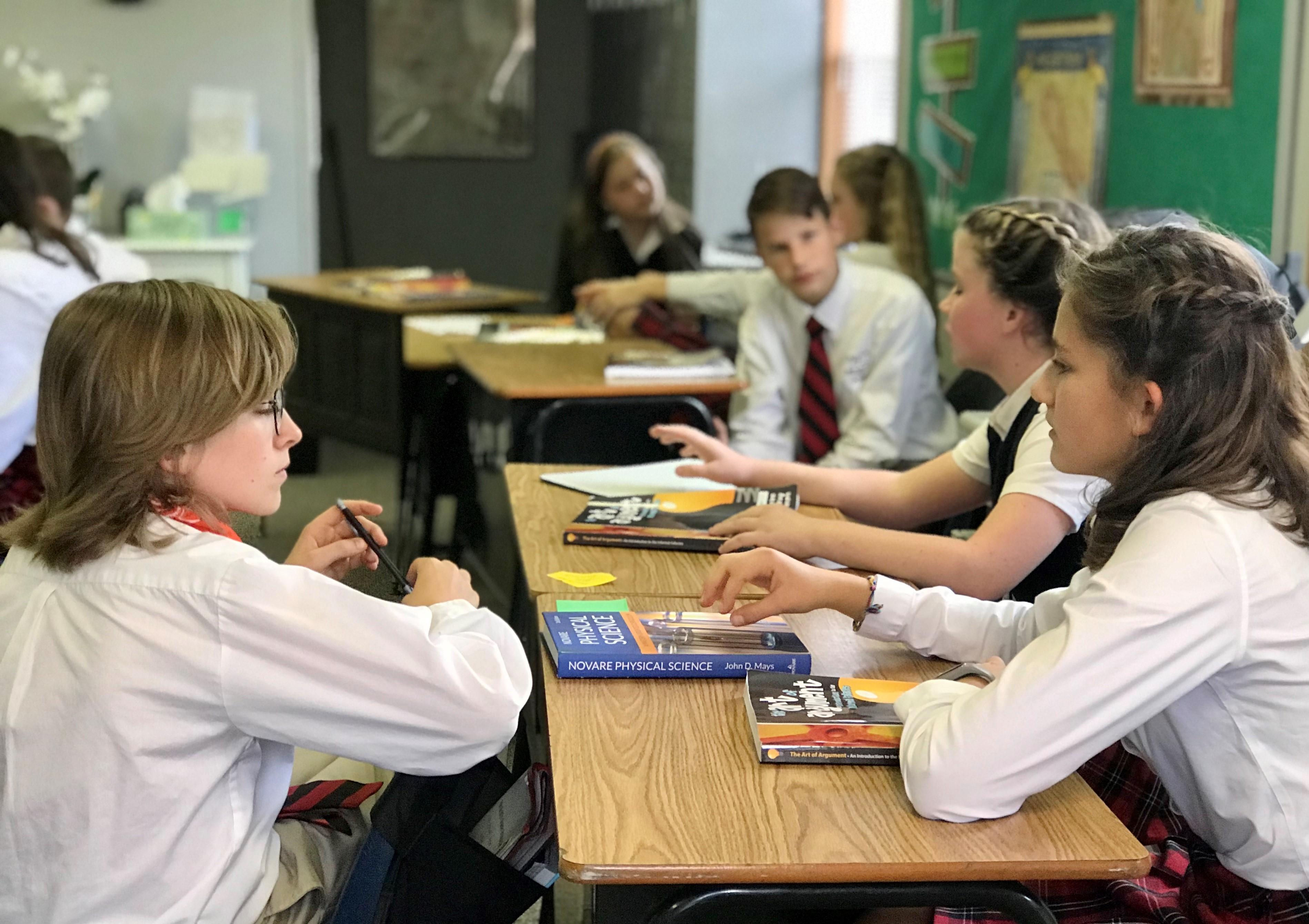As Bible teachers, we need many tools for teaching narrative or story because over 40 percent of Scripture is narrative. Guest author Jason Barney shares why having students verbally retell a portion of Scripture is such a simple and effective tool. Consider how your students might benefit from narration; I know my own 6th and 7th graders have! –Heidi Dean, CSI Bible Specialist
Narration, or retelling content from memory, was a mainstay of education before the modern era. Through the 19th century, paper was not cheap, so students were expected to verbally report on the previous day’s lesson or reading done at home. It was a simple way to hold students accountable.
Charlotte Mason, a late 19th-century British educator, honed and perfected narration in her schools. Mason noted that “Children narrate by nature,” because they love to retell episodes. Students reflect the image of our storytelling God when they retell content as a connected story.
Here are seven steps to implementing narration in your Bible classroom.
1. Explain Why Retelling is Powerful
I first saw narration in a 4–5th grade Bible class reading the book of Jeremiah. After the teacher read aloud a chapter of an intense prophetic oracle, she asked all the students to close their Bibles and called on one student to narrate. I was astonished. He retold in detail so much of the poetic language and pronouncements of the passage, I thought, “I’m a college student, and I couldn’t have retold as much!” I had no idea you could engage with ideas at this level with young children.
Modern research says that retrieval practice, such as retelling a story from memory, is the single most important activity to improve learning. A classic example: Close your science book, get out a blank sheet of paper, and write down all you can recall on the topic. The authors of Make It Stick say that practicing retrieval after one exposure makes learning stick far better than hearing the material again. (p.23)
Using narration as a learning tool and assessment helps build a learning environment of greater attention and focus. Employing the right type of accountability creates a culture of greater effort.
2. Set the Standard: A Single Narrator
When rolling out this practice, ask students to focus as best they can on the passage being read aloud. The more that they can picture what is happening in their mind’s eye, the better their narration will be. Explain that after the reading, one student will be selected randomly to give a narration—to retell everything they can remember. Classmates will then be asked to give additions and corrections to the narration.
3. Use a Randomized System to Cold Call
You might be inclined to take volunteers, especially at the beginning, but some students may avoid narrating as long as possible. In the meantime, they may develop more performance anxiety around it because their avoidance has caused it to loom large in their imagination. Use randomization, like a set of cards with each student’s name, to avoid calling on students for personal or behavioral reasons. I call my set, “The Cards of Destiny.” Randomizing also creates an atmosphere of full accountability.
4. Resist the Urge to Interject
Resist the urge to correct or help students in the middle of narration. Prompting not only interrupts the student but can have the side effect of making your student reliant on you. Listening quietly also develops a virtue our culture desperately needs: the ability to listen to another person patiently and attentively and express one’s view afterward. The classroom should be a training ground for this habit.
5. Ask for Additions and Corrections
After every narration, whether weak or strong, thank the student and ask the other students: “What can we add or correct?” Do not say, “Are there additions or corrections?” because in most cases, there are things to improve. Always ask the same question so you do not reveal your assessment, and students will do the work of remembering and adding whatever possible.
6. Practice . . . and Practice Some More!
Students will develop habits of greater focus, accuracy, and thoroughness as they practice retelling. Once they meet the goals for full narration, you may want to try a variation below:
- String narration: Interrupt the first student’s narration mid-stream and call on another student to continue where they left off.
- Personal whiteboards: Have students’ bullet-point their narration, followed by reporting to the class, a partner, or group. Ideal for quick reviews of previous content.
- Written narration: This holds 100 percent of students accountable at one time, but writing can be cumbersome since it is slower than a student’s natural speed of thought. You might write out tough words on the board, which will serve as memory cues as well as models of spelling.
7. Use Partner or Group Narration
Have one student narrate to the other, with the partner making additions and corrections at the end. This method benefits from involving more students at one time, but it has the possibility of diminishing quality. There is less pressure to perform well without the teacher and everyone else listening in, so circulate the room to listen for the quality of narrations. Encourage students to hold one another accountable for the details. Also, this variation can be noisy, so seating, spacing, and students’ volume will matter.
To learn more, consider these resources by Jason Barney:
- Free e-book!: “Charlotte Mason and the Trivium: Planning Lessons with Narration”
- Pre-order: A Classical Guide to Narration
- The Joy of Learning: Finding Flow through Classical Education
About our guest author: Jason Barney serves as principal of Coram Deo Academy in Carmel, Indiana. He completed an MA in Biblical Exegesis at Wheaton and has taught third to twelfth grades. He regularly speaks at educational conferences and authored The Joy of Learning and A Classical Guide to Narration.
References
1. Peter C. Brown et al. Make It Stick: The Science of Successful Learning. Belknap Press, 2014.

In a narration, students retell the account with as much detail as possible.

Students focus more intently when hearing or reading the content, knowing they will retell the information immediately after.

Partner narration is a great variation, when standards and accountability remain high.